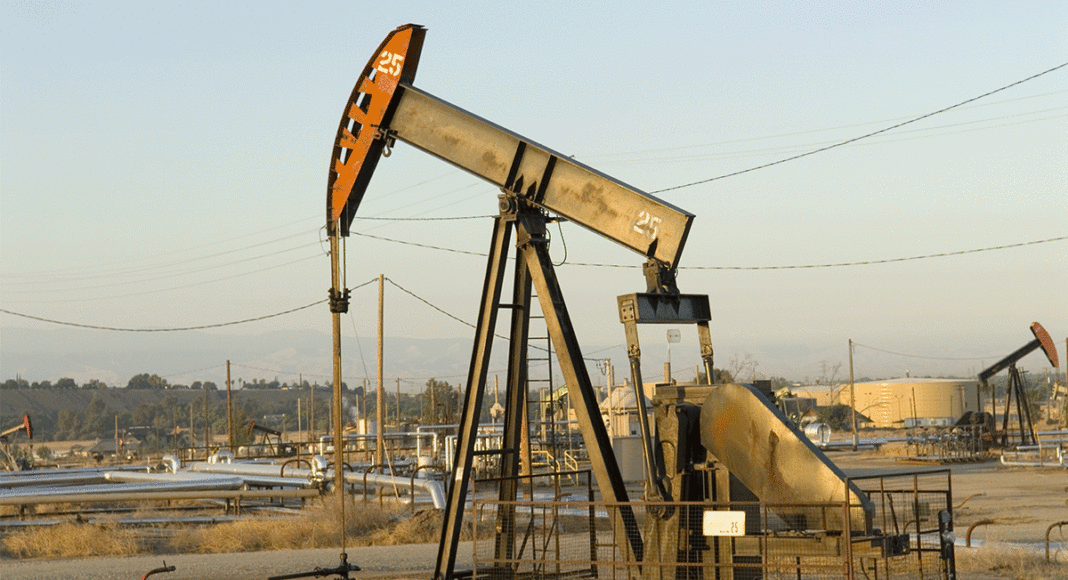A plan to open up drilling in California will result in 75 new oil wells over the next 20 years, many of them along the Central Coast, according to a new proposal unveiled by the Bureau of Land Management.
On May 10, the federal agency announced the plan to open approximately 800,000 acres of public lands and underground federal mineral rights across California’s Central Coast to new oil and gas drilling, with specific targets in San Benito County, including areas surrounding Pinnacles National Park. The news comes less than a month after it announced a plan to allow drilling on more than 1 million acres of federal land near Bakersfield.
The announcement drew a chorus of objections from regional electeds, including Rep. Jimmy Panetta (D-Carmel Valley), State Sen. Bill Monning (D-Carmel) and Assemblymember Robert Rivas (D-Hollister).
California is the sixth-largest oil-producing state, providing more than 8% of U.S. crude oil production from thousands of private wells, most of them in the San Joaquin Valley. The California Department of Conservation reported that as of April 2018, there were 31 active oil or gas wells in San Benito County, and 15 active oil or gas wells in Santa Clara County. The wells are operated by six companies on private land.
The new Bureau of Land Management (BLM) plan would greatly expand the opportunity to obtain oil and gas leases on federal land—much of it in fragile, remote settings on the Central Coast.
The resulting land-use management decisions would affect underground federal mineral rights primarily located in Fresno, Monterey and San Benito counties. The change is not expected to affect Santa Cruz County, which was the first the first county to ban fracking and oil drilling in 2014. Santa Cruz County does not have any BLM land, other than the protected Cotoni-Coast Dairies National Monument, where the mineral rights are owned by the Trust for Public Land.
On May 13, Rivas asked Gov. Gavin Newsom to contest the unprecedented increase of oil exploration on public land, officially asking the governor to file a protest, saying that the Donald Trump administration’s plans are inconsistent with state and local laws.
BLM regulations provide a 60-day window for Newsom to review the plan for any inconsistencies with state and local plans and policies, and to provide recommendations. The general public has a 30-day protest period.
Panetta encouraged all residents to participate in the public comment period and share their opinions on opening more federal land to oil and gas leases.
“It is critical that we share our opinion of the proposal directly with this administration,” the congressman said in a statement.
WELL WORRIES
The area considered by BLM to contain the “highest potential” for oil and gas resources generally covers the southern Salinas Valley of Monterey County, southeastern San Benito County and the western flank of the San Joaquin Valley, including portions of western Fresno, Merced and Stanislaus counties.
There are 41 active or abandoned oil and gas fields in this area; of these, only 13 contain underground mineral rights managed by the BLM, known as “federal mineral estate.” All but one of 13 of these fields are located within a portion of one or more groundwater basins. Environmentalists worry about the potential impact of oil and gas well drilling on groundwater resources.
The BLM manages nearly 600 oil and gas leases in California, covering more than 200,000 acres. Between 80-90% of the agency’s oil and gas wells are in the San Joaquin Valley. More than 95% of all federal drilling in the state occurs in established fields in Kern County.
The latest action by the Trump administration follows by one year the announcement of a plan to revise the 50-year-old offshore drilling moratorium also opposed by state agencies and environmental groups.
Since 1969, concern about potential environmental damage after a massive Santa Barbara oil spill resulted in a statewide moratorium on new coastal or offshore oil and gas leases, which continues.
The state Lands Commission reported that in 2017, 23 offshore rigs were still producing more than 7,000 barrels of oil per day, about one 10th of the production at the time of the moratorium 50 years ago.
The Lands Commission, chaired at the time by then-Lt. Gov. Newsom, said it would not approve new pipelines or allow use of existing pipelines to transport oil from new offshore leases.
“The polluting fossil fuel industry has perpetuated inequality by burdening disadvantaged communities with toxic air pollution from refineries,” Newsom said in a letter to the Trump administration at the time, “and it would be unethical to intensify these impacts by expanding oil production.”














Fossil fuels are a miracle. We cannot duplicate them in an economic fashion. Natural gas has lowered our carbon footprint more than all the so-called “green energy” combined. We need to embrace fossil fuels and make them even more efficient. BTW Natural gas is sustainable. The earth makes it all the time. It is not a real fossil fuel, unless you think there were dinosaurs on Uranus or Saturn. Stop believing the lies of the human haters. Humans need an environment too.